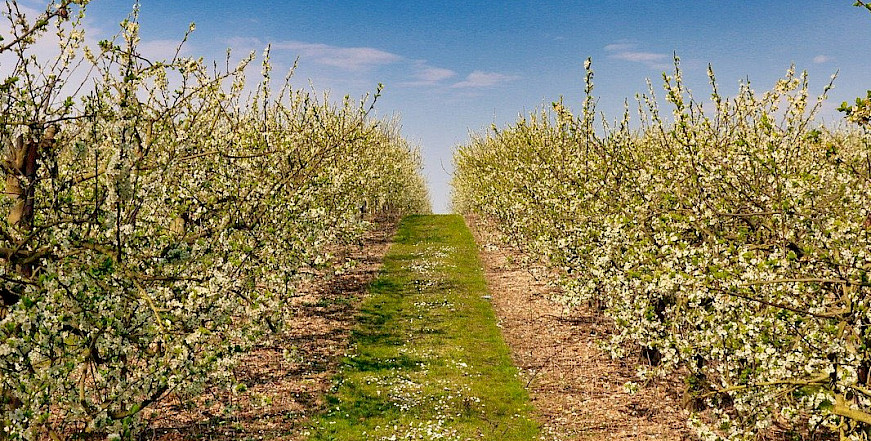What's Your Apple Cider?
Journey Around the World With Your Favorite Apple Cider
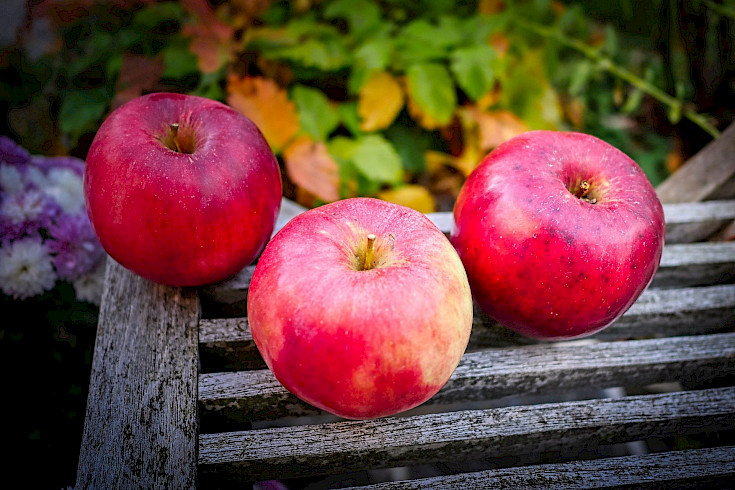
Apples abound in the fall. They seem to be everywhere and so is apple cider. In the U.S. apple cider is sweet, refreshing, and something that won’t make you tipsy. For the most part in America, apple juice and apple cider are interchangeable, and most folks here drink it either cold or, hot with a cinnamon stick. In Europe, if you ask for apple cider, you will get something we call hard cider. European apple cider is always served cold and is always fermented. It can be tart or sweet, sparkling, or murky depending on the variety of apples used and the method of fermentation and distilling that has been perfected through the centuries by the French, British, and Spanish.
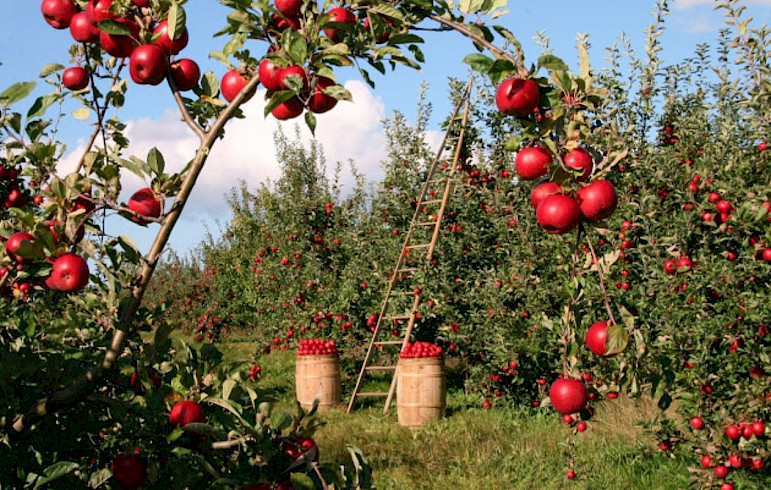
Apple Genetics
The interesting thing about apples is their genetic make-up. Come to find out, the DNA of apples is more complex than human genetic diversity! Recent sequencing found that apples have more than 57,000 genes as compared to our 25,000! Apples also have the ability to produce”offsprings” that are nothing like their parent trees and fruits. In other words, the fruit from one seedling is genetically speaking, unique to any other grown anywhere else in the world. This is what gives apples their unique regional flavor that differs around the country and around the world from region to region. The choice of apple varieties and how they are blended, fermented, distilled, and bottled literally makes all the difference in the world.
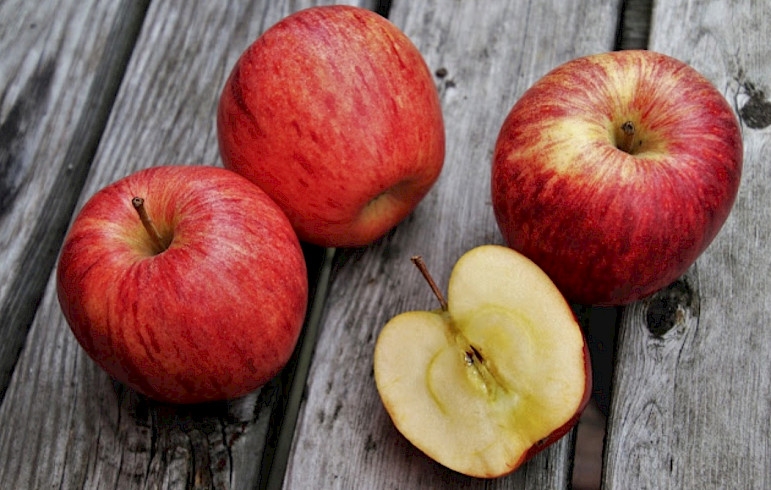
French Cider
Today, France is still the largest producer of cider with Normandy, Brittany, and the Basque Country being the main producing regions. Prior to WWII, apple cider was the second most consumed beverage in France. WWII destroyed many of the orchards here slowing production. French apple cider is light and sweet and is bottled before fermentation to create a natural sparkle that is similar to champagne. In France, unlike in the U.K., if it is not made from 100% apple juice it cannot be called apple cider. One of the world’s premier cider makers is Domaine Dupont, the most revered in France. Ciders with vintage dates and Calvados that is double distilled apple cider aged in oak casks is carefully crafted here.
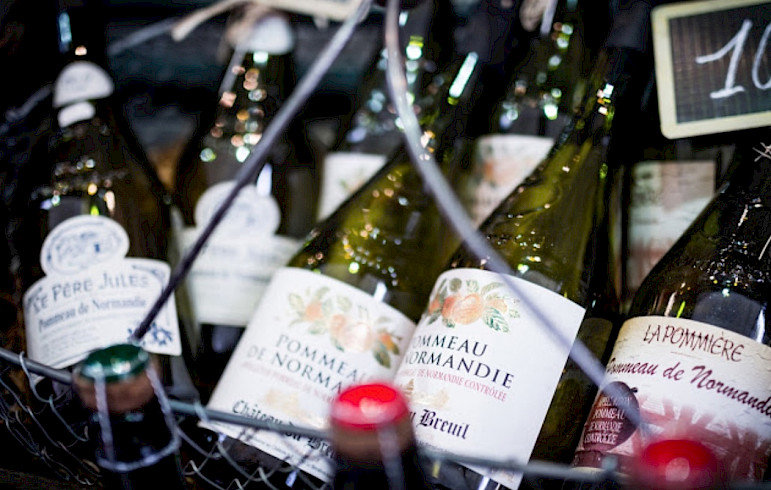
Spanish Cider
In the Basque and Asturian regions of Spain, there are two basic types of apple cider produced, sidra natural and sidra gasificada. Sidra Natural Cider uses a slow fermentation process with wild yeast and is stored for at least five months in chestnut kegs. This cider has an effervescent quality due to natural yeasts and is dry, vinegary, and tart. Sparkling ciders, known as sidra gasificada are made in large stainless steel tanks and are quite sweet. Like France, Spain has regulations that specify the types of authorized apple varieties used to make cider. A highlight of drinking cider in Spain is the way it is served. The cider server extends his arm over his head and pours cider into a glass from a height of two feet. This process”breaks” the cider giving it a quick injection of bubbles.
British Cider
The Normans are said to have introduced apple cider to Great Britain around 1200. Today most of the apple cider in the U.K. is made in Herefordshire and Somerset. Strongbow is the most popular cider in the U.K. followed by Bulmers, both are produced by H.P. Bulmer, a subsidiary of Heineken. There are two basic ways apple cider is made in the U.K. Some ciders are made from bittersweet and bitter-sharp apples and will have the word “scrumpy” on the label meaning no concentrate was used. This cider is extremely dry and cloudy and, doesn’t taste like apples. The second type of cider made in the Kent region uses a mixture of sweeter apples and other fruits. The result is a sweeter cider that is as high as 8.5% in alcohol content. In the U.K. cider can contain as little as 34% apple juice and still be called cider.
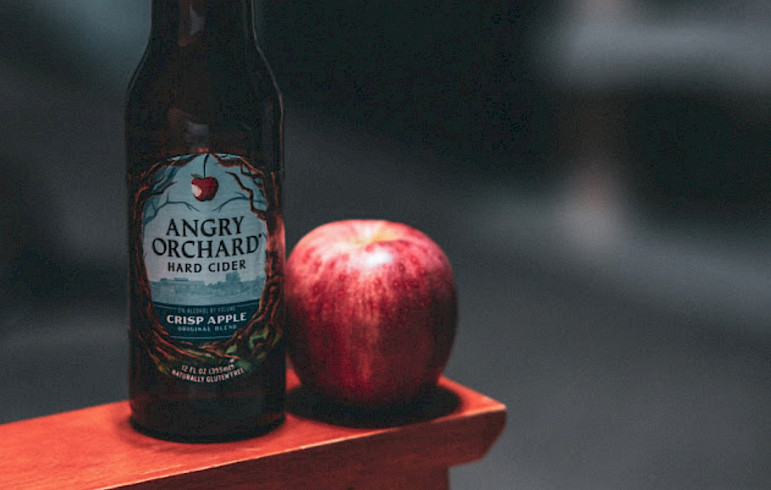
American Hard Cider
Historically, apple cider came over on the Mayflower and was initially safer to drink than water. In the 1920s Prohibition included cider; it never regained popularity and was replaced by beer as the alcoholic beverage of choice. As a result of Prohibition, apple cider was made from a high percentage of sweeter apples and apple concentrate; becoming the sweet non- alcoholic cider we know today.
In recent years, hard cider has made a comeback in America. Today a variety of innovative methods and apples are used to make American hard cider very different from its European relatives. Some U.S. hard ciders blend a variety of local apples, others use barrel-aging and fruit infusion techniques, and still, others are adding hops to apple cider and processing it like an IPA beer. American hard cider has a range of sweetness and alcohol content can be as high as 11%. Today more than 50% of the market share of hard cider in the U.S. is captured by Angry Orchard from Walden, New York. This cider made from bittersweet apples and is unfiltered with a semi-sweet taste and a hazy appearance.
Connecticut Hard Cider
Hopkins Vineyard in New Preston makes a farmhouse cider made from locally grown apples. This is a traditional English style dry cider. Crazy Cock Cider in Stafford Springs makes a large variety of ciders from Tea-Hee a chamomile flavored tea cider to Lovers Quarrel which is a cider with rose petals and oak and Jitter Juice which is cider brewed with dark roast coffee. Averill Farm in New Preston Connecticut, one of the oldest apple orchards in the state is now producing a dry sparkling hard cider. Hogans Cider Mill in Burlington established in 1912 offers hard cider and a taproom. Hogans cider is made using a mixture of tart apples that gives this cider a smooth dry finish.
